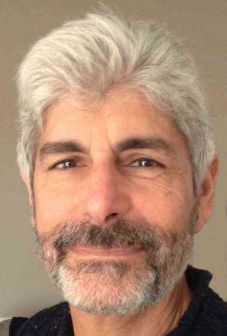Michael L. Freeman, PhD
More Information
Dr. Freeman continues a distinguished career in the field of Radiobiology, with a tenure at VUMC spanning 40 years. He served as the Division Director for Radiation Biology and 1 year as Interim Chair of Radiation Oncology. Currently, he is the Vice Chair of Faculty Development and Promotions for the Department. He served on the steering committee for the AACR Radiation Sciences and Medicine Working Group and completed an appointment to the Board of Scientific Counselors for Clinical Sciences and Epidemiology at the NCI. An expert in in radiobiology and cancer biology, Dr. Freeman is frequently called upon to chair DOD, NIAID, and DOE study sections.
With respect to clinical education, Dr. Freeman directs the residency Radiation Biology course. This weekly didactic session covers the fundamentals of Radiobiology as well as Cancer Biology. Supplemental topics covering advances in immunotherapy and targeted kinase-modulating agents are covered as well. In addition to resident education, Dr. Freeman serves as an advisor to clinical residents pursuing basic and translational sciences research. He has mentored several Holman Pathway residents and continues to collaborate with physician-scientists on staff.
Radiation induced lung injury is a crucial dose-limiting factor in patients receiving thoracic radiotherapy, affecting a significant proportion of patients even with use of newer radiotherapy techniques. We are investigating a novel pathway regulating fibroblast activation that can be directly targeted to limit progressive radiation-induced lung fibrosis. We found that the thromboxane-prostanoid receptor (TPr) was constitutively expressed in human and murine fibrotic pulmonary fibroblasts and that pharmacological inhibition or conditional genetic ablation of the TPr markedly attenuated pulmonary fibrosis in mice resulting from ionizing radiation. Although thromboxane A2 is a major ligand for TPr, we found that TPr signaling was being driven by F2-isoprostanes (F2-IsoPs), resulting from non-enzymatic, free-radical oxidation of arachidonic acid. We have demonstrated that ionizing radiation induces F2-IsoP generation in cell culture and in murine pulmonary tissue in vivo. F2-IsoPs are increased in idiopathic pulmonary fibrosis due to oxidative stress in this disease, but whether they are increased in patients who develop radiation-induced pulmonary fibrosis (RIPF) is unknown, although preclinical and clinical studies provide key support for the overall hypothesis that non-enzymatic free radical-induced oxidation of arachidonic acid signaling significantly contributes to RIPF. There are key gaps in our knowledge that need to be filled before a clinical trial targeting this pathway would be appropriate. First, the therapy would need to work in the context of existing standard of care, including immune checkpoint therapy. Second, although it is likely that there is an increase in either thromboxane or F2-IsoPs in RIPF, we need to verify that patients receiving thoracic radiation actually show an increase in one or more of these molecules. Finally, we need a better understanding of the mechanism by which TPr regulates pulmonary myofibroblast differentiation and activation in the context of radiation. These are the questions Dr. James West and I are addressing.
